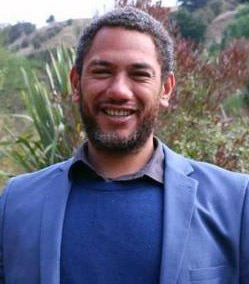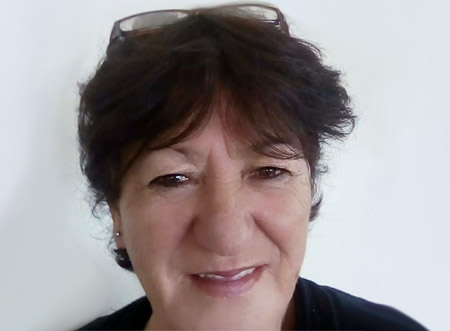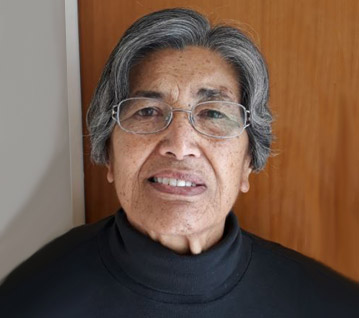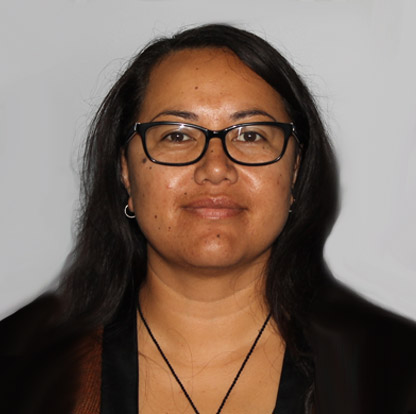Mana Moana Pou
The Mana Moana pou represents the health of Tangaroa and the moana (sea) through a range of Tohu Matua, Tohu Whāiti and Pātai Inenga. They are measured seasonally using the maramataka (Māori lunar calendar).
Hinemoana
Hinemoana is one of our guardians of the sea. She is a beautiful sea maiden who fell in love with Kiwa.
Together, Hinemoana and Kiwa had a number of tamariki who are the ancestors of the different sea creatures; shellfish, eels, seaweed, octopus and so on. Her realm is Te Tiritiri o te Moana (the far spread ocean).
Tangaroa
Tangaroa-whakamau-tai is the Atua of all waters, the waves, the creatures. Ranginui and Papatūānuku are his parents.
Tangaroa is us and we are him. His blood runs through our veins as we are his direct descendants through a long line of whakapapa. Through the whakapapa we descend through many whales, waves and Te Iwi Punaturi (the sea people). Tangaroa is the connector of all lands and Islands. He is vast and he has many states. Tangaroa can be calm and peaceful or very powerful. He is able to connect to his parents from the land to the sky. Tangaroa is the life blood of us all.


Mana Tangata Pou
The Mana Tangata pou provides an indication of the strength of local mana whenua connection to the moana and original tikanga and kawa (customs and protocol). The pou works the same way as the mana moana pou – with its health determined by weighting and analysis of all relevant Tohu Matua, Tohu Whāiti and Pātai Inenga.
Hinetu
Hinetu / Hinetua is a descendant of Tangaroa and the sister of a famous Ahuriri chief called Tunuiarangi.
She had children with Pakaumoana who was a descendant of Ngati Awa. Pakaumoana was lucky to survive being chased by a war party as his father was directed in land. Because he took another path he and his small group were saved. However, the rest of the Maruiwi people died after being chased off a steep cliff at Te Pohue. Pakaumoana went on to Heipipi. This is where Hinetu and Pakaumoana met and later they had a son by the name of Paretararoa. Five generations below Hinetu comes Turauwha who was the principal chief of Otatara Pa before the invasion of the Kahungunu people.
She is holding a horse mussel because this is a taonga species. After the earthquake in 1931 tens of thousands were left sitting, drying out. They aren’t all that common anymore.
Tunuiarangi
Tunui was a famous chief of Heipipi pa in Bay view. He was the sister of Hinetu and descendant of Tangaroa.
Like his ancestors, he had a special affinity with the sea. At Whareponga he kept a pet whale called Ruamano. When Taraia, of Ngati Kahungunu, tried to invade Ahuriri he realised that Tunui was too powerful for them. There are a few versions of the story. One states that Tunui’s spirit stood in a grove of karaka and performed power incantations that made his men slippery like eels. Taraia realised it was the great Tunui and knew he was not going to win the battle. Another version speaks of Tunui and Taraia making peace by way of hongi. Soon after Tunui rode out of the Keteketerau channel on the back of Ruamano to go to Matariki (at Cape Kidnappers) to fetch paua for Taraia and his men. Taraia and his war party went on to attack Turauwha and his people and was able to take Hikurangi pa and colonise Ahuriri and Heretaunga through many intermarriages with mana whenua.
There are three different layers of indicators
that determine the health of each pou
Tohu Matua
Tohu Matua are the key indicators based on te ao Māori principles and were selected by mana whenua. Each is weighted based on their significance and importance to the overall health of each pou. For example, for the Mana Moana pou, one of the Tohu Matua is hauora, another is ohanga. Both are important, however, hauora has been given a heavier weighting, because it has a stronger importance to mana whenua in influencing the overall health of the Mana Moana pou.
The health of each Tohu Matua is, in turn, determined through measuring or scoring each Tohu Whāiti.

Taonga
Whale’s Tail
The whale’s tail represents our taonga species. The mana whenua decend from a line of whales. Whales also helped Māori navigate Te Moananui a Kiwa (Pacific Ocean).

Whanga
Patiki (Flounder)
The patiki represnts the amount of kaimoana that could be found in Te Whanganui a Orotu before the water drained away. Some of our marae also have deep connections with the patiki as it is found up many of our rivers. Patiki was also known to be prolific here and we still sing about them in our local waiata along with other creatures from the sea.

Whakapapa and Pūrākau
Poutama (Stepped Pattern)
The poutama are a pattern often used to represent whakapapa (genealogy). Often poutama can be seen on the back wall of a wharenui (meeting house). As well as our whakapapa to Tangaroa we also have many pūrākau that we share about the uses and relationship we have to the moana. We remember the way our tipuna (ancestors) used to gather kaimoana, the tools they used, their gathering strategies and our spiritual connection to the sea.

Awa
Tuna (Eel)
Tuna are representative of the sea and the river. They travel long distances to the Pacific Islands to breed and their offspring come to Aotearoa. Tuna need both fresh water and salt water for this to happen. This reminds us that we cannot think of them in isolation from one another. What happens in the ocean affects what happens in the rivers and vice versa.

Hauora
Pikopiko (Young Fern Shoot)
Pikopiko represent new life. Each frond unravels and as one goes another takes its place. When we can see many pikopiko we know the forest is in a healthy state. Pikopiko was also a stable food our tipuna ate as part of their diet.

Kaitiakitanga
Paua (Abalone)
The paua represents kaitiakitanga. Paua is a kai that we have eaten for many generations and is one of the preferred food sources. We not only eat them but also use its shell filled with and array of beautiful colours in our carvings and other decorative ways. For us to continue to practice these traditions and continue to eat paua and other kaimoana, we need to be active kaitiaki (guardians) of our resources. It’s up to us to look after their stocks by not over gathering and over fishing. In order to preserve these taonga for future generations, we need to make sure we look after our taiao (environment) and allow these species to flourish.

Mahinga Kai
Ritorito (Fish Scales)
Mahinga kai has been represented by ritorito. The ritorito represents prosperity, abundance and health. This Tohu Matua is about how we monitor the many varieties of kaimoana, the numbers of these species and our relationship with them.

Ohanga
Kupenga (Net)
The kupenga is one of the ways we would gather kaimoana. The kupenga represents sustainable fish habits. The bigger the holes in the net, the more the small fish can escape. The smaller the gaps means less can swim free. It’s up to us to make sure we are looking after our stocks and create more sustainable practices.

Wairua
Huruhuru (Feather)
The huia was a very spiritual bird. The male huia had a short, straight beak used for ripping tree bark and the female huia had a long, curved beak used for getting deeper into the tree to get bugs. One would not be able to survive without the other. The huia feather was used for this Tohu Matua because it is no longer alive. The huia is extinct and reminds us that we need to protect our environment and everything in it so extinction doesn’t continue to happen with other species. Huia feathers were often worn by rangatira or tohunga. Often huia feathers were put in a box (waka huia) and given as a gift.

Waitakaro
Tāhiwi (hull)
This Tohu Matua represents the way we play and interact with the ocean. It is represented by the hull of a waka which we used to use to gather kai, travel the great oceans and rivers.

Te Huringa ki te Rangi
Climate Change
Climate change is represented by Manaia and Takarangi which signifies climate. It represents the influence and potential impact of climate change to our marine environment.

Tikanga
Tāmure (snapper)
Kahungunu didn’t give his first catch back to Tangaroa and was reminded of our tikanga when his brother slapped him in the face with a big tāmure (snapper). We have tikanga that are in place to keep us safe and make sure we are thinking about the practicalities of life. Do we still practice our tikanga actively in our everyday lives or have we forgotten our cultural practices?
Tohu Whāiti
Tohu Whāiti are the sub indicators that make up the health of each Ngā Wāhanga Matua. Each Tohu Matua can have between one and seven Tohu Whāiti, which have been selected by mana whenua. Each Tohu Whāiti is also weighted based on their significance and importance, similar to how Tohu Matua collectively inform the overall health of each pou, all of the Tohu Whāiti collectively inform the overall health of each Tohu Matua.
The health of each Tohu Whāiti is determined through a combination of the qualitative and quantitative Pātai Inenga.
Pātai Inenga
Pātai Inenga make up the finest scale of the programme and are the foundation of the framework. Pātai Inenga are made up of both qualitative and quantitative questions which determine the Tohu Whāiti health. Each Pātai Inenga are scored between 0 and 10 based on a scoring methodology. The collective score of the qualitative and quantitative Pātai Inenga is totalled and provides the health.
Te Ohu Urungi – Mana Whenua Steering Komiti

Te Kaha Hawaikirangi
Hapū: Ngāti Pārau, Ngāti Hinepare, Ngāi Tawhao, Ngāti Mahu
Marae: Waiohiki, Moteo, Timikikara, Wharerangi Marae
Representative entity: Pou Tikanga – Napier Port
My whānau are ahi kā in the Ahuriri-Napier area, our whakapapa spreads through many areas, namely in the Te Wairoa through to the Heretaunga region. My connection with various mana whenua groups in the Hawke’s Bay is extensive and entrenched through my whakapapa. This is also attributed to my upbringing in the region, my schooling and involvement in marae, hapū and iwi kaupapa have provided a strong and lasting relationship within the Kahungunu takiwa.
The values that my whānau practice and structure our lives around include kaitiakitanga, manaakitanga, tino rangatiratanga, whanaungatanga, tikanga, kotahitanga, and connection through whakapapa to ngā atua. These values guide and drive my everyday actions and outcomes.
The kaupapa in which I enjoy and have committed my time to include working on marae and with hapū on various kaupapa. I sail on the Ngāti Kahungunu traditional waka haurua, Te Matau a Maui, teaching traditional sailing, environmental awareness and training in celestial navigation.

Chad Tareha
Hapū: Ngāti Pārau Hapū
Marae: Waiohiki Marae
Representative entity: Ngāti Pārau Hapū Trust
As a descendant of Tangaroa through Moremore, Pānia and Karitoki, I feel that it is part of my responsibility to protect their environment by continuously learning best practice methods and techniques regarding environmental, ecological restorations and monitoring and by actively practicing kaitiakitanga within the environment.
For over one hundred years, Moremore provided protection for my tīpuna as they gathered kai and kaimoana from the ocean and Te Whanganui a Ōrotū (Ahuriri estuary). Because of the protection provided by Moremore, our whanau were able to flourish and prosper and because of this it is my duty to protect Moremore and his kāinga (ocean and the Ahuriri estuary).

Laurie O’Reilly
Hapū: Ngāti Pārau
Marae: Waiohiki
Representative entity: Waiohiki Marae
I am a Mana Whenua Komiti member that represents Waiohiki Marae.

Mary Martin
Hapū: Ngai Te Ruruku
Marae: Petane, Tangoio
Representative entity: Petane Marae
As a child our whānau home was behind the mouth of Te Ngarue, (Tangoio River mouth). Tangitū, the sea behind, provided much of our kai. Living close to the sea our mum taught us early to always respect the sea. To only take what wasn’t needed for kai. We later moved to Napier and my father who was born on Charles Street in Westshore, was an engineer and boatbuilder and he also drove the ferry across the harbour. He knew the wind and sea all too well and transferred his knowledge to my brothers. He taught us how to build boats, how to fish and haul with nets to always be able to provid for our families. My brother have dived and we set pits for crayfish for many years out at Pānia and Town reef.
My whakapapa can be traced back to Pānia and further to Tangaroa. The respect and affinity I feel to these waters us why I sit on the komiti. I will do what I can to ensure this environment is guarded and protected for my moko puna.

Jenny Mauger
Hapū: Ngāti Hawea
Marae: Matahiwi
Representative entity: Kahungunu Ki Te Matau a Maui, Customary Fisheries
I am a Mana Whenua Komiti member that represents Kahungunu Ki Te Matau a Maui

Margret McGuire
Hapū: Ngāti Hori, Ngāti Hinemoa, Ngāti Toaharapaki
Marae: Kohupatiki
Representative entity: Kohupatiki Marae
I am a Mana Whenua Komiti member that represents Kohupatiki Marae.

Ngaio Tiuka
Representative entity: Ngāti Kahungunu Iwi Inc
I am a Mana Whenua Komiti member that represents Ngāti Kahungunu Iwi Inc.

Hoani Taurima
Hapū: Ngati Marangatuhetaua
Marae: Tangoio Marae
Representative entity: Maungaharuru Tangitu Trust
Ka tuwhera a Maungaharuru, ka kati a Tangitū
Ka tuwhera a Tangitū, ka kati a Maungaharuru.
When the season of Maungaharuru opens, the season of Tangitū closes
When the season of Tangitū opens, the season of Maungaharuru closes.
Tangitū (the sea) is vital to the Hapū of Marangatūhetaua (also known as Ngāti Tū), Ngāti Whakaari, Ngāti Kurumōkihi, Ngāi Tauira, Ngāi Tahu and Ngāi Te Ruruku ki Tangoio. Tangitū has a mauri (life force) of its own. This mauri binds the spiritual world with the physical world.
The Hapū regard all natural resources as being gifts from ngā atua kaitiaki (spiritual guardians), including those within Tangitū. Tangitū is within the domain of Tangaroa-i-te-Rupetu (Tangaroa) the spiritual guardian of the moana (sea), water bodies and all within them. Decedents of Tangaroa include reefs, whales, waves, ocean currents and all fish life within the moana. Therefore, both the decedents of Tangaroa and our Hapū are connected by whakapapa (genealogy). Tangaroa was vital to our Hapū tīpuna (ancestors) and remains significant to the Hapū whānau (families) living today. It is the responsibility of all of us to keep the mauri of Tangaroa healthy so that future generations are able to enjoy all the fruits of Tangaroa’s domain.

Tipene Cottrell
Hapū: Ngāti Hinepare, Ngāti Mahu, Ngāi Tawhao, Ngāti Parau
Marae: Wharerangi
Representative entity: Wharerangi Marae
I am a Mana Whenua Komiti member that represents Wharerangi Marae.

Moana Hakiwai
Hapū: Ngāti Hinepare, Ngāti Mahu, Ngāi Tawhao
Marae: Timikara, Moteo and Wharerangi Marae
Representative entity: Timikara Marae
I am a Mana Whenua Komiti member that represents Timikara Marae.

